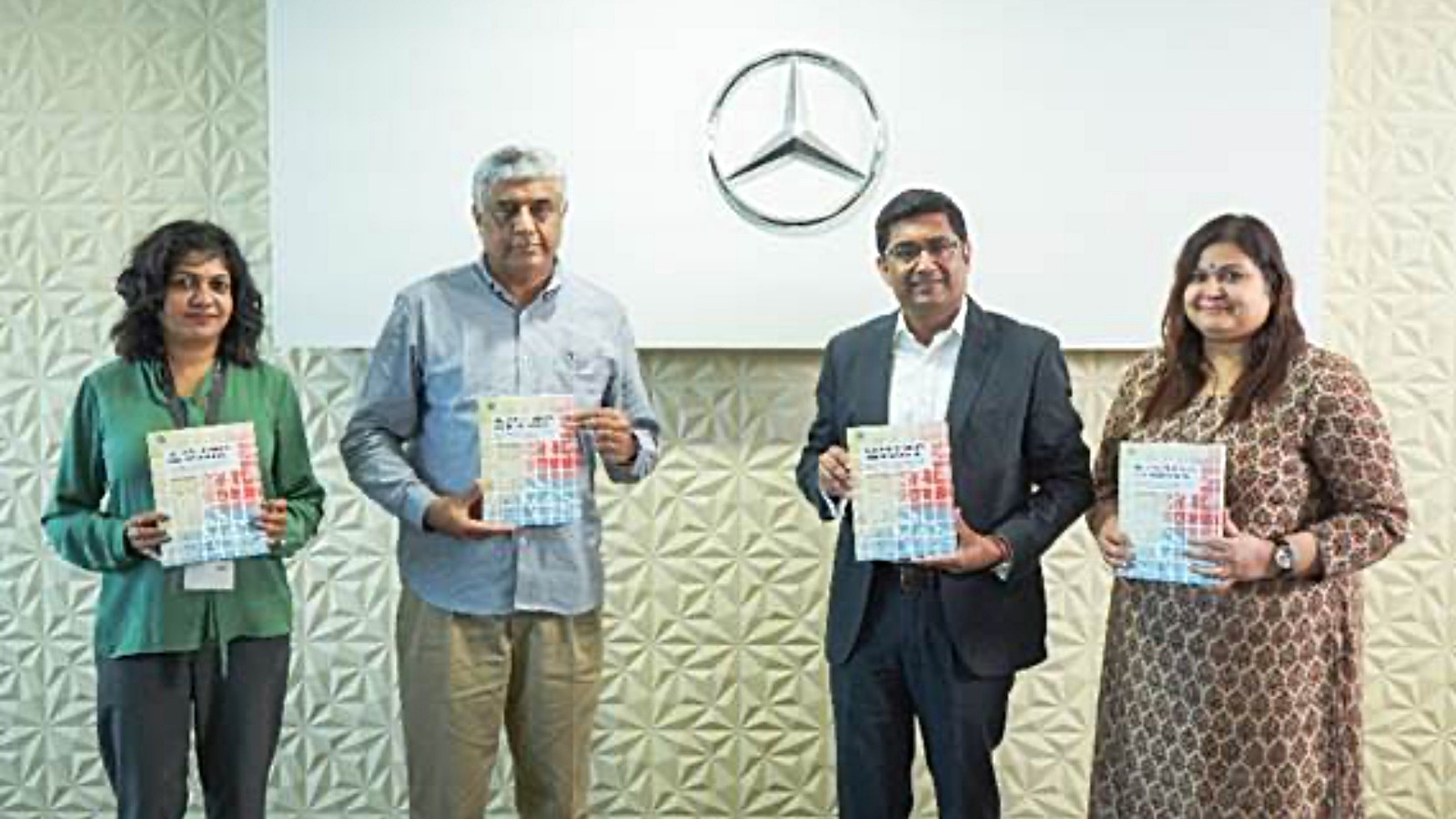Infra
15-minute neighbourhood, potential solution to Bengaluru’s infrastructure woes, to be piloted in Nallurhalli

The Jana Urban Space Foundation, in partnership with Mercedes-Benz Research and Development India, on Tuesday unveiled the design guidelines and action toolkit for building 15-minute neighborhoods in Bengaluru. The pilot project will first be implemented in the Nallurhalli neighbourhood in Whitefield, Bengaluru East.
The 15-minute neighbourhood- a term coined by Prof Carlos Moreno in 2016- aims to offer a potential solution to Bengluru’s straining infrastructure woes. The 15-minute neighbourhood means designing communities where essential services like groceries, schools, healthcare, and recreational facilities are conveniently located within a short walk or bike ride from one’s home which can significantly reduce the reliance on carbon-intensive transportation.
Prof Rajeev Gowda, vice chairperson of the State Institute For The Transformation of Karnataka (SITK), had earlier proposed implementing the 15-minute neighbourhood concept in Bengaluru to address the IT city’s infrastructure concerns.
The concept promotes local economic development and improves social equity by ensuring equal access to essential services and amenities for all, regardless of income or background. It also supports the urgent need to address climate change by changing the way urban planners design and inhabit urban environments.
A joint press statement by the foundation and research centre announced that guidelines have been developed after extensive research to assess existing services such as mobility infrastructure, public transport, and green spaces. The focus is on walkability, safety, and accessibility. This work led to the development of the ‘Move-Play-Sustain-Include’ framework, which aims to promote integrated mobility and transportation, safe public spaces, sustainable produce markets, and inclusive social infrastructure. The overarching goal is to create accessible and vibrant communities.
The guidelines also include case studies and surveys conducted in four selected neighborhoods in Bengaluru – Whitefield, Malleswaram, Indiranagar, and Chickpete. These surveys, based on 1664 responses, revealed the following transportation habits: 62 per cent use private transport, 10 per cent use buses, 13 per cent use the metro, and 11 per cent use cabs. Additionally, 47 per cent regularly use public and shared transport.
Furthermore, 61 per cent reported poor quality of transport infrastructure near their homes, and 36 per cent indicated a desire for safer pedestrian crossings at intersections and signals. The survey also highlighted that 70 per cent found sufficient quality basic amenities in their neighborhoods, 27 per cent visited open spaces like parks, playgrounds, and lakes near their homes, and 50 per cent want cleaner surroundings near open spaces.

The design guidelines, aimed at urban planners, technical experts, bureaucrats, and community-based organisations, recommend that essential services such as groceries, schools, and healthcare should be within a 15-minute walk or bike ride. The guidelines also advocate for mixed land use to establish lively communities with residential, commercial, and recreational spaces, and to encourage diverse housing options, as well as the integration of workplaces, shops, and cultural facilities.
The report recommends developing pedestrian-friendly streets, bike lanes, accessible and well-integrated transportation modes, creating abundant public spaces and green areas for social interactions, incorporating sustainable practices in building design, energy use, and waste management, and finally creating inclusive urban amenities that are accessible regardless of age, ability, or income.
As part of the implementation toolkit, the document suggests that the government, city corporation, and other stakeholders identify areas for intervention, develop projects based on planning principles, and implement proposals within a three to five-year framework. The toolkit recommends allocating resources and setting up a city-level program cell for implementation. It further suggests evaluating the availability, accessibility, and quality of neighbourhood amenities and allocating budgets for program implementation, including capital, operational, and maintenance expenses.
Prof Gowda said, “Accelerated industrialisation has led to issues like water crisis, landfill explosion, traffic control, and more. Proactive measures that foster collaboration and innovative solutions at the grassroots level are imperative to tackle these concerns. The ‘building 15-minute neighbourhoods’ design guidelines and
implementation toolkit represents a positive step towards creating more equitable and environmentally conscious cities, and we look forward to seeing this in action.”
Nithya Ramesh, director of Jana Urban Space Foundation, said, “For most people, their first memories of a city are tied to their street and neighbourhood before the city as a whole. In cities like Bengaluru, which has been navigating the gap between masterplans, there’s a unique opportunity to emphasise communities and neighbourhoods as foundational elements of urban development. This approach is central to our 15-minute neighbourhood programme, which aims to use communities as the building blocks for creating better cities, enhancing quality of life, and fostering a sense of belonging. Through the 15-minute neighbourhoods, we aim to bring back people into the planning process.”











